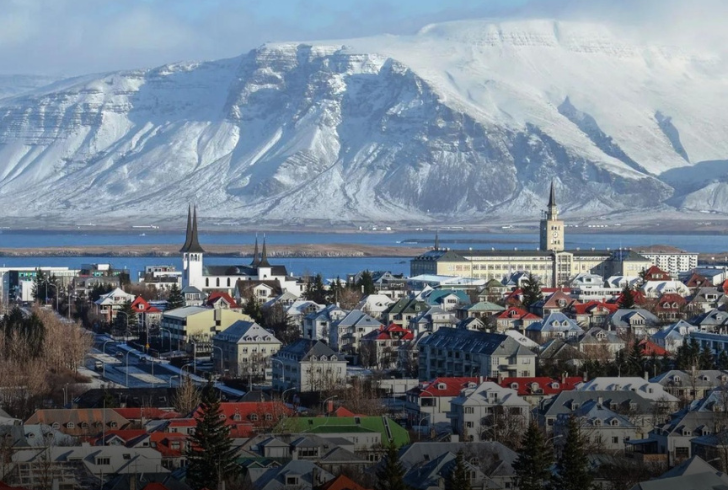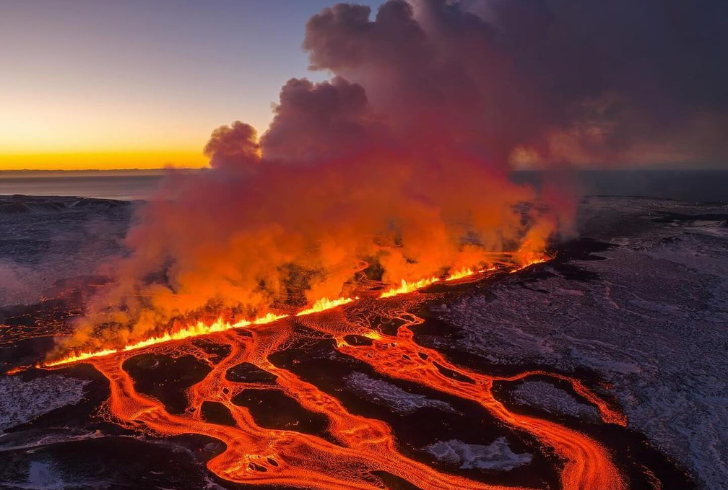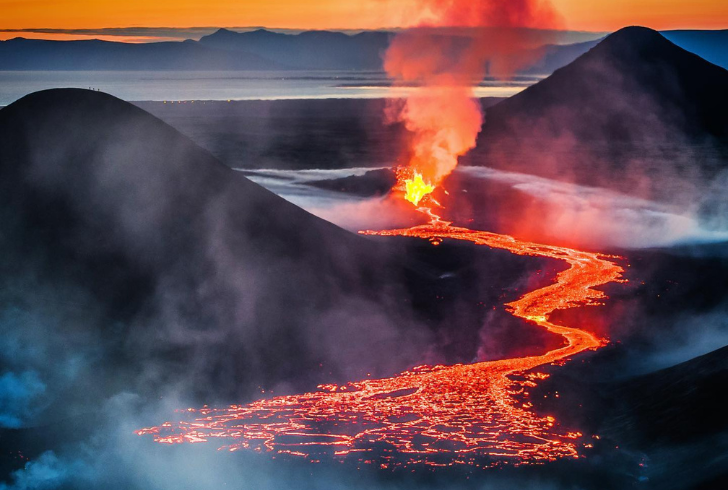The recent Iceland volcano eruption has sparked concern and garnered international attention as authorities rush to ensure the safety of residents and protect vital infrastructure. The eruption, occurring near the famed geothermal Blue Lagoon spa and the picturesque fishing town of Grindavik, marks the fifth such event in the region since December.
As the fissure, stretching over 2.5km, continues to expand, fears mount over the potential impact on nearby communities and essential services. Here’s a comprehensive look at the unfolding situation and its implications.
Unfolding Iceland Volcano Eruption Events

The Icelandic Meteorological Office (IMO) has been closely monitoring the situation as the volcanic activity unfolds. The fissure, now spanning more than a mile, has drawn attention not only for its size but also for the volume of lava it’s spewing towards Grindavik.
Concerns intensify as residents brace themselves for potential disruptions to essential services, with power outages already affecting the town as a precautionary measure. Despite the declaration of a state of emergency, air travel remains largely unaffected, offering some relief amid the mounting tension.
Evacuation Efforts and Safety Measures
Authorities have been swift in their response, prioritizing the safety of residents and visitors alike. The evacuation of Grindavik, coupled with precautionary measures at key facilities such as the Svartsengi power plant and the Blue Lagoon, underscores the gravity of the situation.
Barriers have been erected to mitigate the risk posed by lava flows, while emergency services remain on high alert to respond to any developments. Despite these efforts, concerns linger over the accessibility of roads in and out of Grindavik, raising questions about evacuation routes and logistical challenges in the event of further escalation.
Impact on Infrastructure and Daily Life

The eruption’s aftermath extends beyond immediate safety concerns, with a ripple effect on infrastructure and daily life in the region. The closure of roads, coupled with power outages and potential disruptions to water supply, poses logistical challenges for residents and businesses alike.
While Keflavik International Airport continues to operate, heightened seismic activity in the lead-up to the eruption underscores the fragility of the situation. As communities grapple with uncertainty, resilience and solidarity emerge as key themes in the face of adversity.
Insights from Experts and Eyewitnesses
Geophysicists and natural history cinematographers offer valuable insights into the Iceland volcano eruption dynamics and its broader implications. Ari Trausti Gudmundsson, a prominent geophysicist, notes the inevitability of such events given Iceland’s geological makeup.
Meanwhile, eyewitness accounts from individuals such as Benjamin Hardman provide a firsthand perspective on the surreal nature of the eruption and its impact on the local landscape. Their observations underscore the need for continued vigilance and preparedness in the face of volcanic activity.
Historical Context and Future Outlook

The recent eruption is not an isolated incident but rather part of Iceland’s rich geological history. Situated atop the Mid-Atlantic Ridge, the country boasts a network of active volcano systems that shape its landscape and cultural identity. As scientists delve into the geological nuances of the region, the prospect of a prolonged period of volcanic activity looms large.
With the last significant eruption in the Reykjanes Peninsula occurring over 800 years ago, the current spate of events raises questions about the region’s future trajectory and the resilience of communities in the face of natural phenomena.
Navigating Uncertain Terrain
As Iceland grapples with the aftermath of yet another volcanic eruption, the resilience of its people and the solidarity of the international community offer glimmers of hope amidst uncertainty. While the immediate focus remains on ensuring the safety of those affected and safeguarding critical infrastructure, the broader implications of volcanic activity prompt reflection on humanity’s relationship with the natural world.
As the situation continues to evolve, proactive measures, scientific insights, and community resilience will be essential in navigating the challenges ahead.




